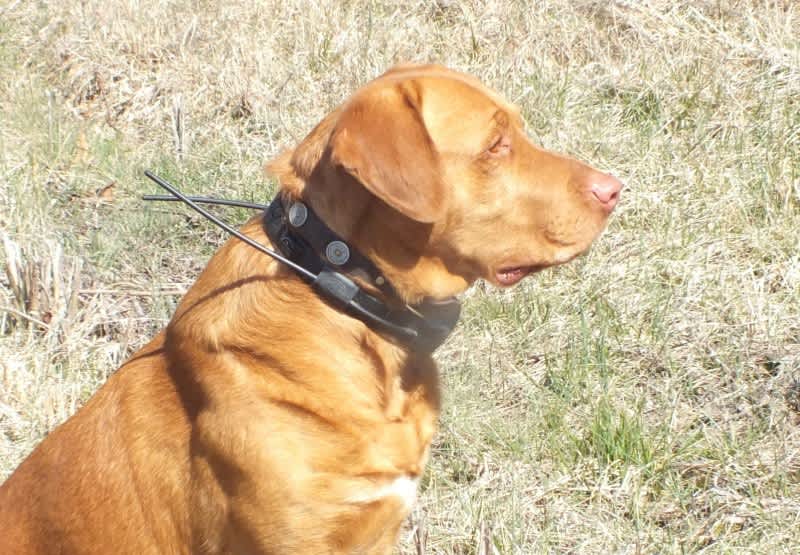SportDOG TEK 1.0 GPS Collar
Lewis Creek Shooting School 04.08.13

We were hunting near Mayer, Arizona on BLM land near the High Desert Hunt Club. The quarry was Gamble’s quail, cute little feathered rockets with a top-notch feather on their heads. Giovanni Scalia was my guide and hunting companion. Gio had warned me there were birds to be found, but the hunting would be tough. It was mid-January and about 50 degrees, but I was sweating. This was real Western hunting, with cats paw, prickly pear, and dry washes. When we were at the top of a ridge, the dogs were down in a draw and we were constantly trekking down and up the rocky hillsides to keep up.
We’d found some birds, though they tended to get nervous and flush early in spite of staunch points from Gio’s dogs. For the first couple of points, I thought my companion was psychic because, with no dogs in sight, he’d say, “The dogs are pointed just over the hill about 75 yards,” and the dogs would be right there. Then I noticed his training transmitter looked different. Gio’s dogs were wearing the first GPS collars I ever saw–the SportDOG TEK 1.0 GPS Collar.
Good bird dogs cover a lot of ground and in some places, you can have a dog on point, but have no idea where he is. There have been solutions for this, bells first, then beeping collars, both of which are annoying to me and surely must drive a dog mad. Now, there is a much better solution. GPS technology has become remarkably accurate and cost effective. My first GPS cost $300 and had no maps and few features. Now, you can have a working GPS unit for under $100 that will do more than my old unit. It was only a matter of time before GPS technology would be used in locating dogs.
The way these systems work is a little more complicated than a dog wearing a GPS. Since the dog can’t read the GPS, or tell you where he is, the GPS information must be relayed to the dog handler. In the case of the SportDOG TEK system, the receiver for the GPS signal is also the transmitter for an integrated training unit that’s part of the dogs GPS receiver/transmitter. The GPS receiver receives satellite information and pinpoints the dog’s location. It then sends this information to the dog handler’s handheld unit which displays the information in relation to where the handler is. In effect, both the dog and the handler have a GPS unit. The two units talk to each other and tell the handler how far away the dog is and in which direction. By adding a training module, the trainer’s unit can also be a training collar that is operated by the dog handlers receiver/transmitter.
The TEK 1.0 can be expanded to track as many as 12 dogs from as far away as seven miles. The handlers transmitter/receiver has a tilt-compensated compass and is waterproof to 25 feet. The system will recharge in two hours. It will also store up to 20 waypoints. The training module has 99 continuous, momentary, and rising stimulation levels and options for vibration and tone stimulations. I’ve been testing the system and it’s quite remarkable in use. While my Lab rarely ranges beyond sight range, the TEK 1.0 would be a boon for wide-ranging bird dogs and hounds.

